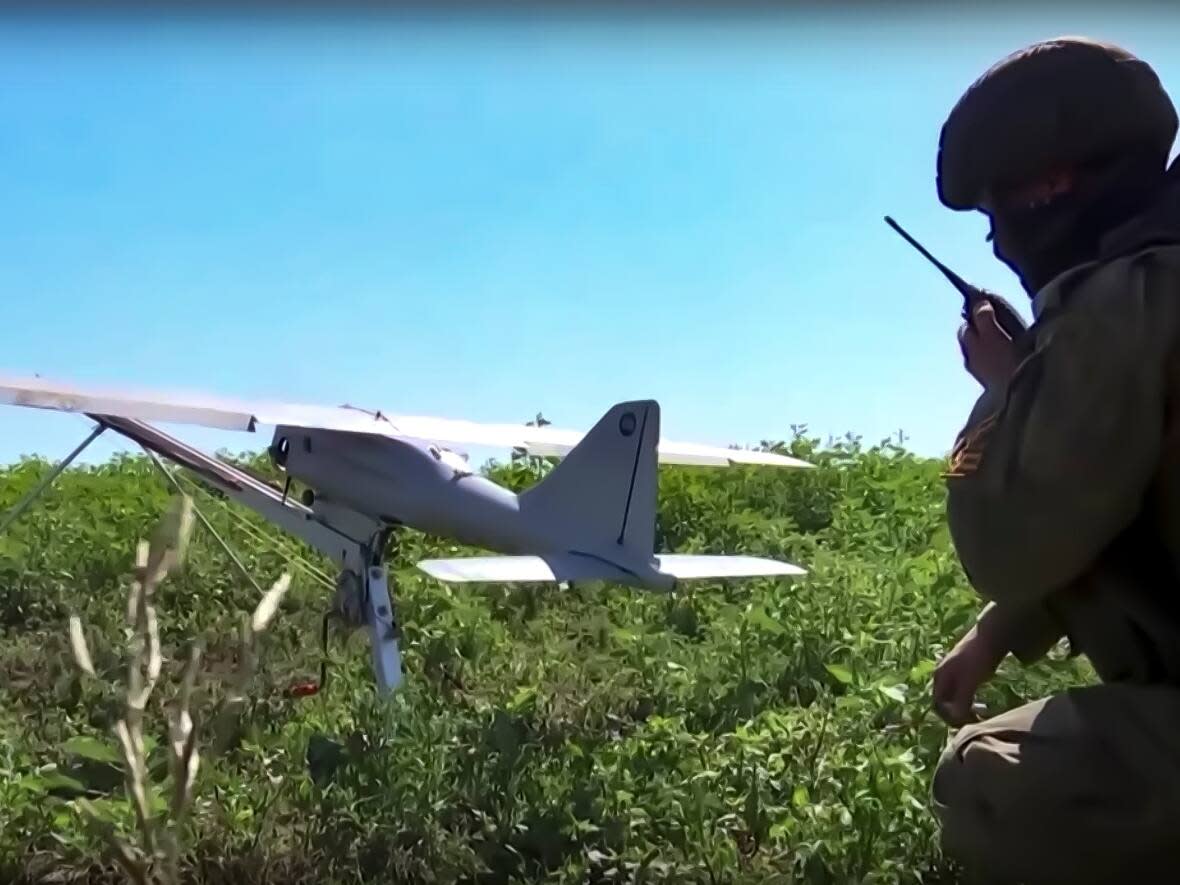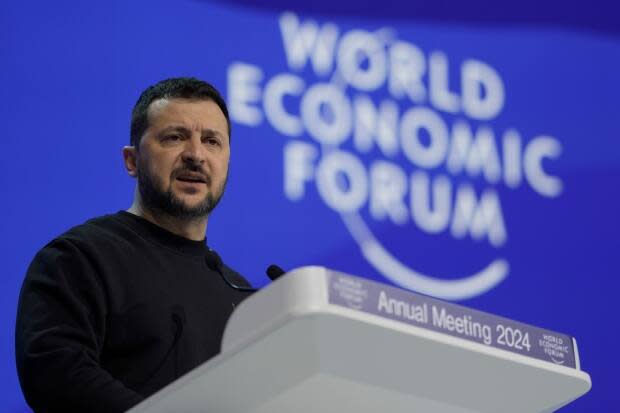Russian drones used in Ukraine may include Western parts, ambassador says

- Oops!Something went wrong.Please try again later.
The Russian ambassador to Canada said in an interview with CBC News that Western electronics might be found in Russian drones being used in Ukraine.
"It is possible," said ambassador Oleg Stepanov, when asked whether Canadian or other Western electronics could be found in Russia's prized Orlan-10 drones. "But not necessarily."
The Orlan-10 is one of Russia's most critical and widely used aerial assets in its war against Ukraine. The Russian military uses them to spy on the frontline Ukrainian targets it attacks with artillery barrages or missiles.
Last week, a CBC News investigation revealed that the St. Petersburg-based Special Technology Center (STC), a Russian arms maker that produces the Orlan-10 drone, is covertly targeting Canadian technologies to include in its products.
Two Quebec-based tech companies, EXFO and Aimtec, both had their products listed on STC supplier lists.
WATCH | Ambassador says Russian drones may include Western parts:
Stepanov cast doubt on the STC revelations, characterizing them as Ukrainian disinformation.
"Well, the information that was reported by CBC News," he said, "comes from Ukraine."
Since launching its full-scale invasion in 2022, the Kremlin and the Russian military-industrial complex have faced relentless sanctions from Canada and its allies, inhibiting their ability to purchase critical electronics for their weaponry.
But experts and Western leaders have warned that President Vladimir Putin's war machine has found ways to skirt those international efforts and obtain components like microchips through proxy companies and willing Chinese intermediaries.
In a speech earlier this year at the World Economic Forum in Davos, Ukrainian President Volodymyr Zelenskyy called out Western sanctions as ineffective.

"In every Russian missile, there are critical components from Western countries," he said. "Dozens of components in every missile. And it's true. It's a fact."
The Ukrainian military has time and again deconstructed recovered Russian weapons, finding Western-made electronics inside missiles, drones, armoured vehicles and other tools in Russia's arsenal.
'Russia is taking over the drones'
According to a Ukrainian drone operator who goes by the call sign VTOL, Russia now has the edge on Ukraine when it comes to drone warfare.
"Right now, Russia is taking over the drones," said VTOL from a drone training school in an undisclosed location in western Ukraine.
VTOL previously served on the frontline but now trains other troops to use quadcopters, small drones used by platoons for real-time battlefield awareness. CBC News has agreed not to use his real name to protect him from being singled out by Russia's military.
WATCH | How Western parts end up in Russian weapons:
"The beginning of the war, of course, we were ahead of them," he said. "But when Russia tested the drones ... they started to do it very masterfully and they put a lot of money into it."
Russian officials have repeatedly denied their companies are sourcing Western goods for the country's war efforts. Stepanov said that for more secretive weapons like the Khinzal hypersonic missile, there is no chance the manufacturers would include Western electronics.
"The most advanced parts of Russian defence-sector production have always used only Russian components," he said. "And I will never believe that in a product like Khinzal, [or] any hypersonic weapon or nuclear capabilities, there are outsourced components."
But researchers have called that into question.
Olena Bilousova, a senior research analyst at the Kyiv School of Economics, co-authored a report earlier this year uncovering Western components inside Russian weapons, including Khinzal missiles and the Orlan-10.
Her team put the value of Western electronics used in Russian weapons at more than $4 billion.
"There is actually no Russian weapon without Western technologies," said Bilousova.
She said that governments should extend sanctions to intermediary companies being used to skirt sanctions, but that responsibility also rests on companies like EXFO and Aimtec to track who's distributing their goods.
"They should make their companies more responsible," not only for the companies they sell to directly, but also third parties that may end up using their products, she said. "This will force [corporations] to increase their compliance."

